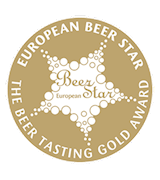Best Campanian Beverage Types
Produced from Greco grape variety, this prized Italian wine hails from Campania. Apart from the still white wine, Greco di Tufo also comes in a sparkling (spumante) style which must be aged for a minimum of three years. Still wines are usually fresh, mineral, medium to full-bodied, with well-balanced acidity.
They can display various aromas of tropical fruit, lemons, pears, apples, and herbs. Although they can be enjoyed young, they also age well, and matured varieties typically show more herbaceous notes. Greco di Tufo wines pair well with poultry, risottos, fish, crustaceans, and shellfish, but they also go well with mozzarella di bufala Campana.
Falanghina is an old Italian white grape variety that is mostly associated and cultivated in Campania. For a very long time, it was not known that the name was used for two distinct sub-varieties: Falanghina Beneventana and the better known Falanghina Flegrea.
Both grapes are used in several regional appellations, and the distinction has not yet been officially recognized. The grapes share similar characteristics and mostly produce straw-colored wines that have fruity and floral notes. They often have a mineral character and sometimes hints of tropical fruit.
Aglianico is a native Italian grape variety. Although it is grown outside Italy, Aglianico thrives in southern Italian regions, predominantly on the volcanic soils of Campania and Basilicata. Aglianico-based wines may have slightly different expressions, but they are typically age-worthy, full-bodied, and high in acidity.
While the flavors of young varieties are usually reminiscent of black fruits, white pepper, leather, and cured meat, aged styles are softer in tannins with a slightly different flavor profile and aromas of dried fruit. Aglianico is a robust wine that pairs well with beef stews, braised lamb, ragù, game, sausages, and aged cheese varieties.
VARIATIONS OF Aglianico
This Italian liqueur is made with lemon zest that is left to infuse in a neutral spirit. The combination is mixed with sugar and water, and it is then filtered after a resting period. Although it is enjoyed and produced throughout Italy, limoncello is usually associated with Sorrento, Amalfi Coast, and the island of Capri, where it was first patented in 1988.
Limoncello is characterized by its vibrant yellow color, while its flavor is fresh, sweet, and aromatic, with strong citrus notes. It is usually enjoyed as an aperitif or a digestif, always well chilled and sometimes served in ice-cold glasses. As an ingredient, it is used in cocktails and long drinks, but it is also easily incorporated in various desserts.
THE BEST Limoncello Fruit Liqueurs
Mostly cultivated in Campania, Fiano is an old Italian variety that has seen a significant revival since the 1980s. This low-yielding, early-ripening grape is praised for its ability to produce crisp and aromatic wines with a lot of character and herbaceous and fruity notes.
These wines are typically medium-bodied and intensely flavored. Young Fiano wines often display aromatic honey notes, and as they age, they tend to develop smoky and spicy notes dominated by hazelnut. The aromas are perfectly balanced with bright acidity.
VARIATIONS OF Fiano
Crema di limoncello is a cream-based variation on a classic lemon-infused limoncello. It is made by combining alcohol and lemon peel macerate with a creamy mixture of milk, cream, sugar, and vanilla. The liqueur is typically pale yellow, with a smooth, velvety texture and distinctive lemon aroma and flavors.
Like limoncello, this creamy variation is also commonly made at home, but commercial varieties are also available. This liqueur should always be served ice-cold. It is enjoyed neat, usually as a digestif, but it would also work well as a cocktail ingredient or a dessert flavoring.
MAIN INGREDIENTS
Guappa is an Italian cream liqueur made with buffalo milk cream. Produced by Antica Distilleria Petrone, the liqueur combines aged brandy with DOP buffalo milk cream. The result is a sweet and balanced creamy liqueur with a dense texture and hazelnut color.
The aromas are reminiscent of cream, hazelnut, and caramel. It can be served neat or over ice. Guappa is best enjoyed as a digestif, but it can also make a great addition to desserts, coffee, and cocktails. It is bottled at 17% ABV.
Rucolino is a traditional liqueur made from arugula (known as "rucola" in Italian), which gives it its distinctive name. This liqueur is typical of the Campania region in Southern Italy, especially the island of Ischia.
The typical process of making rucolino starts with macerating fresh arugula leaves, citrus peel, and some botanicals in alcohol, then sweetening the mixture with sugar or syrup and allowing it to age. The resulting liqueur has a unique bittersweet taste, derived from the peppery flavor of arugula.
This white Italian wine is produced in Campania with an ancient Fiano grape. The best examples made in the region are typically light or full-bodied, fresh, lively, and elegant, with good acidity and complex notes of honey, citrus, and pears, which may develop into deeper aromas of hazelnuts and spices.
Because of its lively character, Fiano can match various dishes, but it pairs exceptionally well with fried or grilled seafood. It also works well with pasta, preferably served with pesto or tomato sauce, and some Campania classics such as fritto misto di pesce, spaghetti alle vongole, spaghetti alla puttanesca, and even mozzarella di bufala Campana.
Aglianico del Taburno is an Italian appellation for red and rosé (rosato) wines that are made with a minimum of 85% Aglianico grapes. The ruby-red Aglianico-based wines are typically full-bodied with aromas of dark fruit such as blackberry, currants, and plums that are often accompanied by notes of spices, undergrowth, and tobacco.
These wines can age well, and while the minimum for regular red Aglianico del Taburno is two years, the Riserva label has to be aged for a minimum of three years, including one year in oak. Aglianico del Taburno reds are best served with meat, especially roasts, stews and sauces, but they can also work well with aged cheese.
Best Campanian Beverage Producers
AWARDS

Decanter World Wine Awards - Best in Show
2021
BEST Casa Setaro Wines
Microbirrificio Artigianale Incanto is a craft brewery based in Casalnuovo di Napoli, Campania, Italy. Founded on March 19, 2019, its journey began with its first beer, Luna Janca. The brewery is the result of Ignazio Iavarone's passion for artisanal beer, which he turned into a professional endeavor.
Its facilities include a 2.5-hectoliter brewing system, a 20-hectoliter cellar, and an advanced water treatment plant.
AWARDS

Barcelona Beer Challenge - Gold
2024, 2023, 2022

Frankfurt International Trophy - Grand Gold
2023

European Beer Star - Gold
2022
BEST Microbirrificio Artigianale Incanto Beers
The Mastroberardino Winery is located in Atripalda, in the province of Avellino, within the Italian region of Campania. Founded in 1878, this family-owned winery has a long tradition in winemaking and is renowned for preserving indigenous grape varieties from the region.
One of the winery's most significant endeavors is the "Villa dei Misteri" project in Pompeii. In collaboration with the Archaeological Superintendency of Pompeii, they worked on the reconstruction of ancient Roman wines. This project involved replanting vineyards destroyed by the eruption of Mount Vesuvius in 79 AD, using the same ancient grape varieties and viticultural and winemaking techniques of that era.
AWARDS

James Suckling - 97 points
2023

Wine Spectator - 95
2023
BEST Mastroberardino Wines
AWARDS

Decanter World Wine Awards - Platinum
2023, 2019
BEST Quintodecimo Wines
AWARDS

IWSC- International wine & spirit competition - Gold
2022

Decanter World Wine Awards - Platinum
2019
BEST Cantina Sanpaolo di Claudio Quarta Wines
AWARDS

World Gin Awards - Country Winner
2022
BEST Carmosina Industria Spirits
AWARDS

Concours Mondial de Bruxelles - Grande Médaille d'or
2022
BEST Montedidio Società Agricola srl Wines
Best Campanian Beverages
AWARDS

Decanter World Wine Awards - Best in Show
2021
AWARDS

Decanter World Wine Awards - Best in Show
2019
AWARDS

IWSC- International wine & spirit competition - Gold
2022
AWARDS

USA Wine Ratings - Gold
2022
21 12 is a dark, alcoholic, spicy, full-bodied, structured, warm, enveloping Christmas beer (Winter Ale). The cappuccino-colored foam is abundant, compact and persistent; aromas of cinnamon, nutmeg and vanilla on the nose. On the palate, in addition to the aromas of the nose, those of licorice, bitter almonds, orange and candied fruit stand out.
It is a beer for meditation and dessert, better if Christmassy like roccocò and mustaccioli but it also goes perfectly with cantuccini and sfogliatelle.
AWARDS

Barcelona Beer Challenge - Gold
2024, 2023, 2022

Frankfurt International Trophy - Grand Gold
2023

European Beer Star - Gold
2022
AWARDS

Wine Spectator - 95
2023
AWARDS

Decanter World Wine Awards - Platinum
2019
Naturalis Historia Taurasi DOCG is a premium red wine produced by the Mastroberardino winery, made entirely from Aglianico grapes sourced from 50-year-old vineyards located on the Mirabella Eclano estate in the Campania region of Italy. This wine is characterized by an intense ruby red color and complex aromas of violet, currant, wild blackberry, strawberry, black cherry, chocolate, and vanilla.
On the palate, it is warm and enveloping, with a rich structure and softness, offering layers of flavors including plum, sour cherry, raspberry, strawberry jam, and spices. It pairs perfectly with cured meats, aged cheeses, pasta with meat sauces, dishes with mushrooms and truffles, as well as elaborate red meat and game dishes.
AWARDS

James Suckling - 97 points
2023
AWARDS

Decanter World Wine Awards - Best in Show
2021
TasteAtlas food rankings are based on the ratings of the TasteAtlas audience, with a series of mechanisms that recognize real users and that ignore bot, nationalist or local patriotic ratings, and give additional value to the ratings of users that the system recognizes as knowledgeable. TasteAtlas Rankings should not be seen as the final global conclusion about food. Their purpose is to promote excellent local foods, instill pride in traditional dishes, and arouse curiosity about dishes you haven’t tried.















